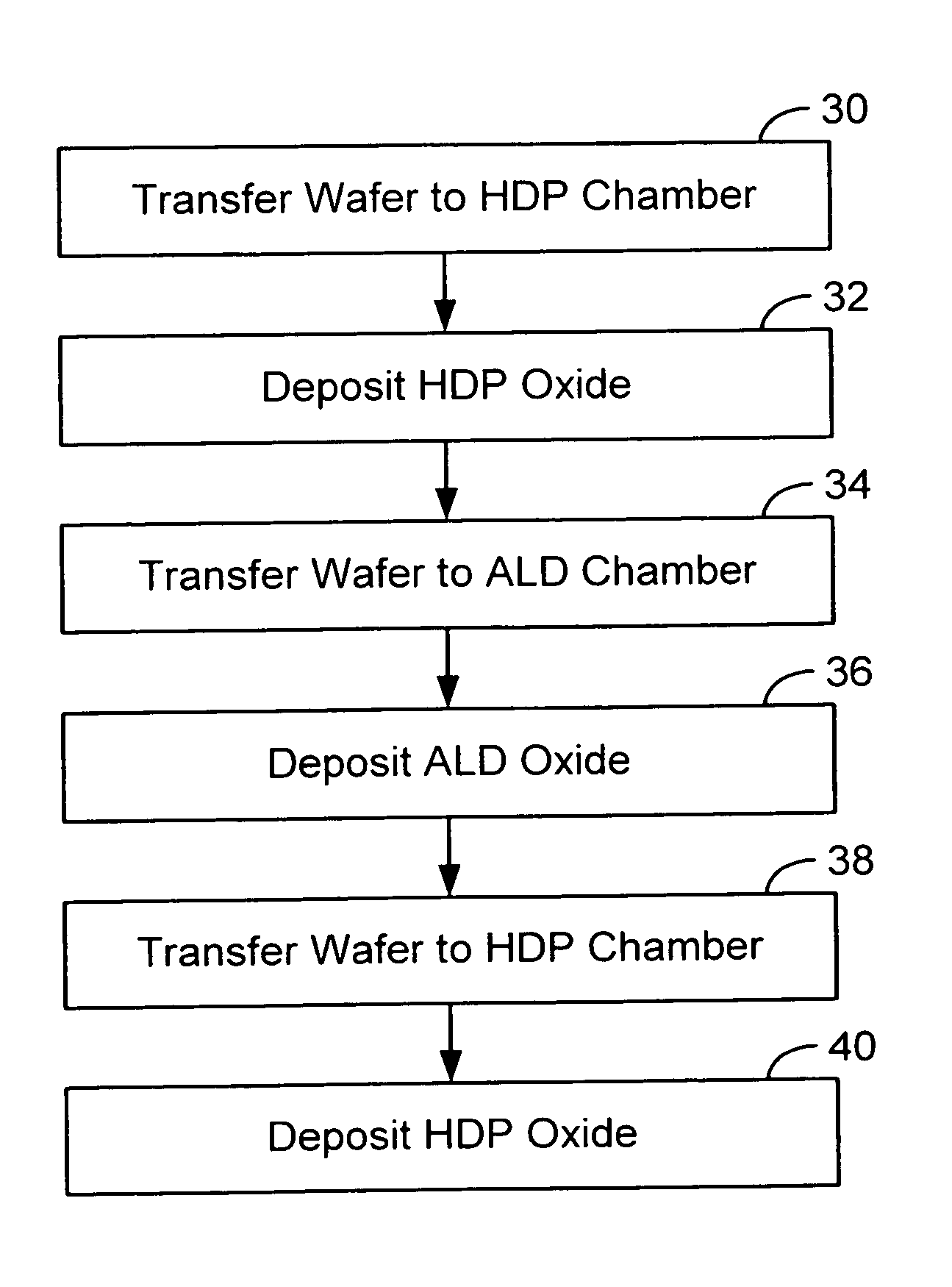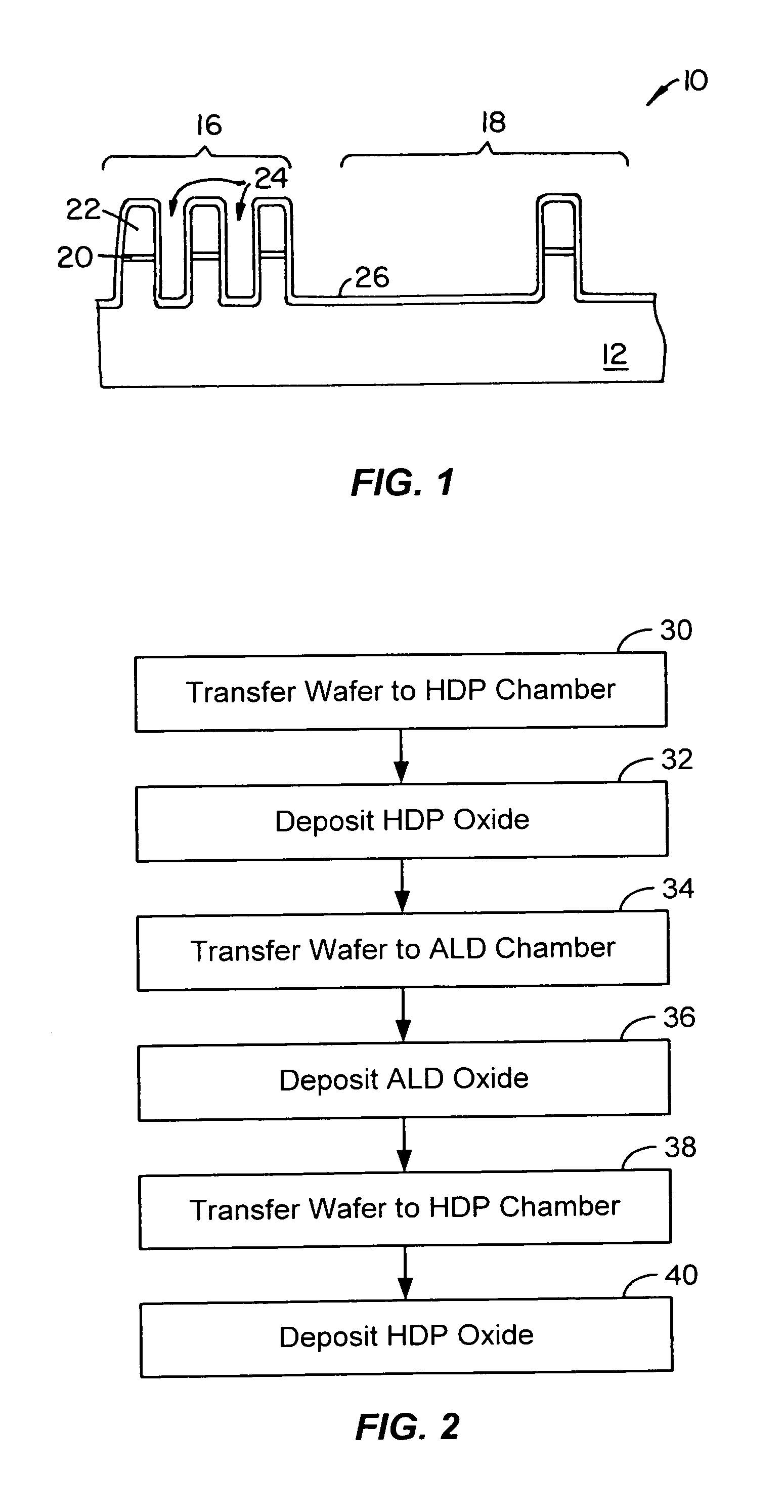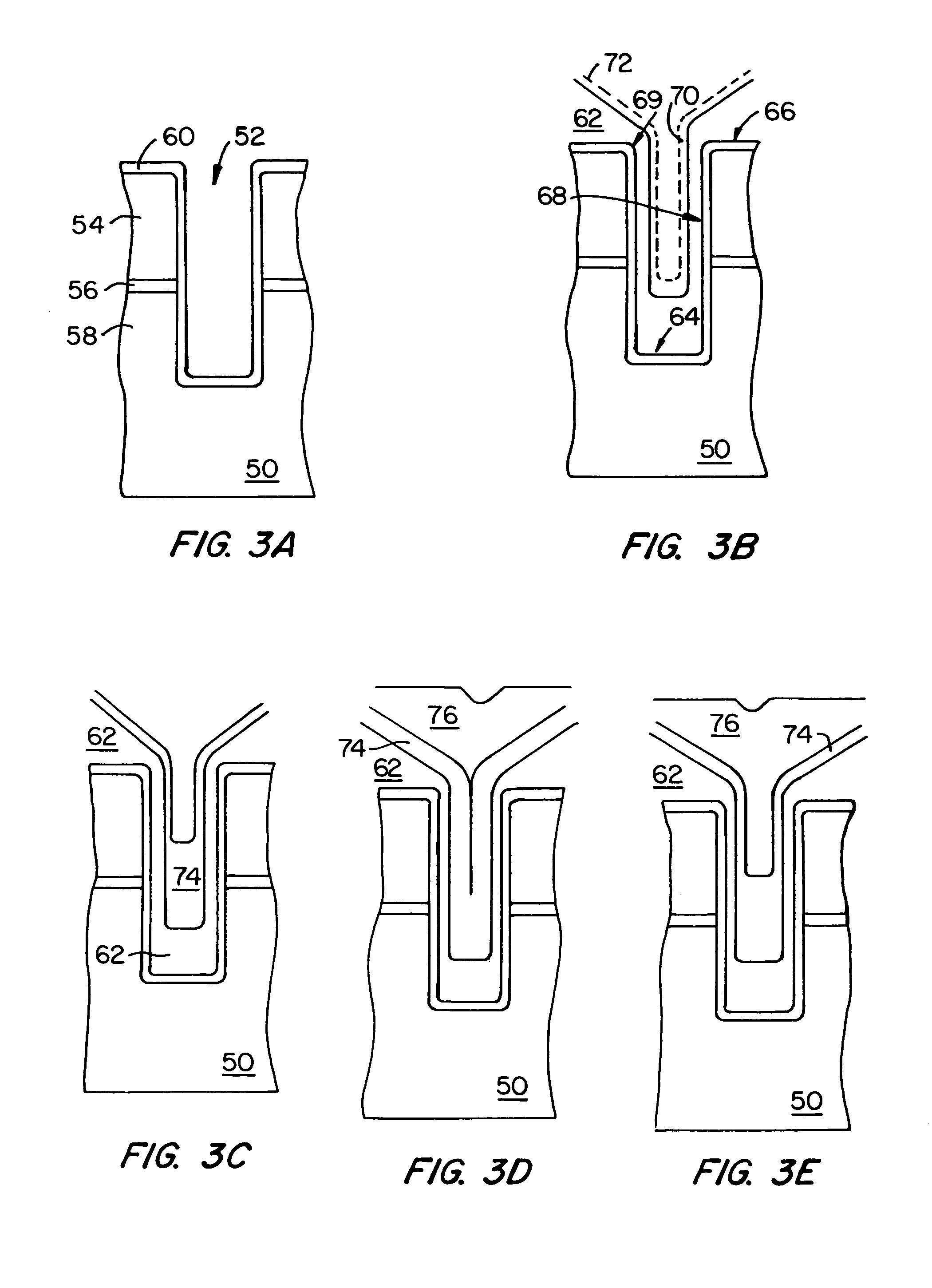Deposition process for high aspect ratio trenches
a high aspect ratio, trench technology, applied in the direction of chemical vapor deposition coating, coating, plasma technique, etc., can solve the problems of affecting device operation, unable to completely fill the gap of hdp-cvd films, and practical limit the aspect ratio of gaps the hdp-cvd films are able to fill
- Summary
- Abstract
- Description
- Claims
- Application Information
AI Technical Summary
Benefits of technology
Problems solved by technology
Method used
Image
Examples
Embodiment Construction
[0020]Embodiments of the invention pertain to a multi-step process for depositing a multilayer dielectric material into high aspect ratio features. Embodiments of the invention permit the dielectric material to be deposited with substantially 100% gapfill for most currently envisioned small-width, high aspect ratio applications. For example, for gaps having a width of 0.10 microns substantially 100% gapfill can be achieved by embodiments of the invention for aspect ratios of 8:1 and even higher in both the active and open areas of an integrated circuit die. Embodiments of the invention are useful for a variety of different applications and are particularly useful for the fabrication of integrated circuits having minimum feature sizes of 0.10 microns or less.
[0021]Embodiments of the invention employ a combination of high density plasma CVD (HDP-CVD) and atomic layer deposition (ALD) techniques to deposit the insulating film within the gaps to be filled. In some embodiments, a first l...
PUM
| Property | Measurement | Unit |
|---|---|---|
| aspect ratio | aaaaa | aaaaa |
| aspect ratio | aaaaa | aaaaa |
| width | aaaaa | aaaaa |
Abstract
Description
Claims
Application Information
 Login to View More
Login to View More - Generate Ideas
- Intellectual Property
- Life Sciences
- Materials
- Tech Scout
- Unparalleled Data Quality
- Higher Quality Content
- 60% Fewer Hallucinations
Browse by: Latest US Patents, China's latest patents, Technical Efficacy Thesaurus, Application Domain, Technology Topic, Popular Technical Reports.
© 2025 PatSnap. All rights reserved.Legal|Privacy policy|Modern Slavery Act Transparency Statement|Sitemap|About US| Contact US: help@patsnap.com



